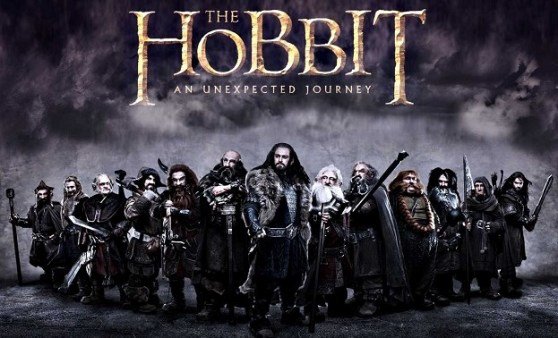
Cinema-goers have complained of feeling sick and dizzy after watching early screenings of The Hobbit: An Unexpected Journey.
The Hobbit is the first to be shot using high-speed 3D cameras that capture twice the normal number of frames per second.
But some viewers said the filming techniques made them feel nauseous and even caused migraines.
The Sunday Times reported one “avid Middle Earth fan”, who had flown to New Zealand from Australia for the premiere, said: “My eyes cannot take everything in, it’s dizzying, now I have a migraine.”
Another fan tweeted: “It works for the big snowy mountains, but in close-ups the pictures strobes. I left loving the movie but feeling sick.”
The Sunday Times said one fan described having motion sickness similar to being on a rollercoaster.
They said: “You have to hold your stomach down and let your eyes pop at first to adjust. This is not for wimps.”
However, others praised the way the film – starring Martin Freeman as Bilbo Baggins – had been shot.
Hollywood director Bryan Singer wrote on Twitter after the world premiere of The Hobbit: An Unexpected Journey on Wednesday: “Having some serious frame rate envy. Amazing and involving. Loved it!”
The 3D company that worked with Peter Jackson on the shoot said the new technology should actually stop people feeling ill.
Matt Cowan, chief scientist at RealD, told stuff.co.nz: “What you will experience is smoother motion.
“The effect you get for things like explosions is much more real.
“It is a great experiment and kudos to Peter Jackson for doing it.”
The Hobbit – the first in a trilogy – is shot at a camera speed of 48 frames per second – double that normally used.

Critics did not react warmly to an unfinished version of the film describing it as looking like a “made for television BBC movie – so uncompromisingly real, slightly sped up, that it looked fake. It was jarring”.
The movie came under fire earlier this year after critics who had seen ten minutes of the unfinished film compared it to a made-for-television film.
Ian McKellen, who reprises his role as Gandalf in the film, defended it as ‘more exciting’ and said the 3D brings fans into Middle Earth.
Thousands of people crowded into central Wellington, New Zealand, for the chance to see some of the films stars including Elijah Wood, Cate Blanchett and Andy Serkis, who plays Gollum.
The second film The Desolation of Smaug will be released in 2013 with There and Back Again released the following year.
What 48 frames per second means?
Movies have been filmed in 24 frame per second (fps) shots since 1927.
It means each second of picture contains 24 still images that create the illusion of movement when put in sequence.
American film director Doug Trumbull invented and promoted a 60 frame per second process called ShowScan 30 years ago but it was not widely used.
The new technology means every second of shot will contain 48 still images – and The Hobbit is the first major studio film to be shot at the higher rate.
The resulting movie should be clearer with images that look more details, “sharp”, and less blurred.
However, some critics have argued that the sharper image makes the film look too similar to television – which is shot at 50 fpm – and ruins the cinema experience.
Director Peter Jackson hopes more than 10,000 cinemas will be able to project the film at the higher frame rate.
But the vast majority of cinemas are currently only able to show the standard 24 fpm.
Therefore the film is being released in six different versions – 2D, 3D and 3D IMAX, all in both 24fps and 48fps.
Peter Jackson said the high speed of frames gives a “hugely enhanced clarity and smoothness” and also claims it cuts down eye strain from watching 3D.
Director James Cameron has said he wants to film the two sequels to his film Avatar at a higher frame rate than 24 frames per second, in order to add a heightened sense of reality.
[youtube b1SJ7yaa7cI]